Agenda
Thank you for attending the 8th Annual Connected Plant Conference and making it such a success!
Please CLICK HERE to view the Paper Archives. The username and password will be emailed to you as an attendee.
We are excited to introduce new content tracks crafted to propel you into the forefront of innovation and collaboration.
Bid farewell to static sessions. The Connected Plant Conference revolves around interactive learning and dynamic engagements. Envision thought-provoking panel discussions, captivating roundtables, and immersive forums where you play an active role in shaping conversations and fostering your growth.
Monday | May 20
- 9:00 AM – 6:00 PM
Registration Hours
- 12:00 PM – 5:00 PM
Industry Day of Golf
- 5:30 PM – 7:00 PM
Island Escape Reception: Welcome to Margaritaville
Tuesday | May 21
- 7:30 AM – 6:00 PM
Registration Hours
- 8:00 AM – 9:00 AM
Breakfast in Digital Arena
- 8:30 AM – 9:00 AM
Tech Talks: 5-Minute Technology Previews
Tech Talks – brand new to Connected Plant this year is the opportunity to learn more about the technology being showcased at the event by our sponsor partners in short 5-minute quick-hitting demo presentations featured in our digital arena. This will be open to all attendees during networking breaks, lunches, and receptions providing the opportunity to learn more about the latest and greatest available technology in a relaxed environment as well as the ability to learn even more and continue the discussions at their booth.
- Tarik Radwan Siemens Energy
- Matt Wiseman OPSWAT
- Tarik Radwan Siemens Energy
- 9:00 AM – 9:30 AM
Welcome and State of the Industry
- Scott Jenkins Chemical Engineering Magazine
- Sonal Patel POWER magazine
- Scott Jenkins Chemical Engineering Magazine
- 9:30 AM – 10:30 AM
Powering your Transformation: How to leverage Culture and Change Management to drive higher Performance
This insightful session that will uncover the value and impact of positioning culture evolution and change management as strategic drivers of Transformation. We will explore techniques that can be used to jumpstart and power your change efforts — and share case studies yielding breakthrough results. Join us for this enlightening keynote experience that transcends the traditional mindset around change management and its critical role in the success of organization transformations. Whether you are a technology enthusiast, business leader, change management agent, or you are looking to drive higher performance from your teams and initiatives, this keynote presentation will change your mindset on culture and change to it being a gamechanger for powering your Transformations.
- Rich Voorberg Siemens Energy
- Rod Walker Kearney
- Kristen Etheredge Kearney
- Rich Voorberg Siemens Energy
- 10:30 AM – 11:00 AM
Break in Digital Arena
- 11:00 AM – 12:00 PM
Cyber Insights Unveiled: A Roundtable Exploration of Current Challenges
Explore the multifaceted landscape of cybersecurity as we tackle pressing issues, including the consequences of cyber attacks, proven techniques for fortifying environments, and the ongoing debate surrounding informal versus formal cybersecurity approaches. This session is designed for professionals seeking a comprehensive understanding of the evolving landscape of cybersecurity in the context of technology adoption. Don't miss this opportunity to engage in meaningful conversations that bridge the gap between compliance and functionality, and gain practical insights into safeguarding critical industrial processes.
- James Goosby Southern Company
- Jay Cribb Southern Company
- PE Jonathan Tubb Siemens Energy
- Tricia Schulz Oak Ridge National Laboratory
- James Goosby Southern Company
- 12:00 PM – 1:30 PM
Lunch in Digital Arena
- 12:30 PM – 1:00 PM
Tech Talks Continue: 5-Minute Technology Previews
- Bill Thackston Siemens Energy
- Speaker TBA from Procronex TBA
- Brian Crandall APERIO Systems
- Bill Thackston Siemens Energy
- 1:00 PM – 1:30 PM
Utilizing Private LTE & 5G Networks to Accelerate Your Digital Transformation
We will highlight how Nokia private wireless networks coupled with DXC’s managed services have helped 100’s of customers overcome indoor and outdoor connectivity challenges, and enabled customers to quickly transform their business to enable digital transformation connecting IoT sensors, devices and applications. The foundation of this connectivity is a resilient customer owned mobile network with all data residing on the customer premise. Please join the session to understand how we can help overcome your wireless connectivity hurdles to improve worker safety, yields and margins at your facility.
- Mario Giacchino Nokia
- Mario Giacchino Nokia
- 1:30 PM – 2:30 PM
Efficiency Unleashed: Bridging Excellence in Operations and Maintenance through Digital Transformation
Embark on a comprehensive exploration of how integrated solutions are reshaping industries by seamlessly combining machine monitoring, the use of vehicles, sensors, and software. Join us for a dynamic session that unveils the revolutionary impact of cutting-edge technology in solving challenges from inception to completion. Discover how machine monitoring has eradicated uncertainties surrounding growth, providing organizations with data-driven insights for strategic planning. Delve into the Swedish utility perspective as we uncover the intricate integration of vehicles, sensors, and software in optimizing operations and contributing to sustainability goals. But that's not all—explore the concept of a unified platform that brings together diverse technologies, offering a holistic approach to problem-solving from start to finish. Learn how this comprehensive solution addresses challenges at every stage, streamlining processes and maximizing efficiency. Don't miss this opportunity to gain valuable insights into the future of technology integration, where a single platform serves as the nexus for innovation, growth, and sustainability. Join us for a thought-provoking discussion that unveils the transformative power of integrated solutions in shaping the industries of tomorrow.
- Randy Mullinax Southern Company
- Chris Moore LCM2M (Caddis Systems)
- Craig Spivey Air Liquide
- Seth Courington Southern Company
- Randy Mullinax Southern Company
- 1:30 PM – 2:30 PM
Unlocking the Power of Data: Why and What It Can Accomplish When Done Right
Join us for an enlightening session where we explore the profound impact of data when harnessed correctly. Learn the essential 'whys' behind leveraging data effectively and discover the remarkable accomplishments that await those who navigate the data landscape with precision and insight.
- Jasper M. Rutten Huntsman Chemical
- Amine Benammar Air Liquide
- Dustin Corey Southern Company
- Jasper M. Rutten Huntsman Chemical
- 2:30 PM – 3:30 PM
Unlocking Potential: A Deep Dive into Digital Twins for Optimization
Join us for a dynamic session exploring the transformative power of Digital Twins in driving optimization across various domains. Learn from end users as they share firsthand experiences on the value drivers of digitization, highlighting the practical benefits derived from their Digital Twins. Delve into the realm of operational excellence and equipment maintenance, discovering how Digital Twins harness vast data sets to establish meaningful relationships, enabling the resolution of common problems at scale. Additionally, explore the role of Digital Twins in fostering sustainability and discover innovative ways to leverage this technology for a more environmentally conscious future. Don't miss out on this opportunity to elevate your understanding and take the next step toward optimization through Digital Twins.
- Jane Arnold APERIO Systems
- Samir Khanna bp
- Chris Jackson Vistra Corporation
- Mark Christofferson Stephenson Technologies Corporation-LSU
- Jane Arnold APERIO Systems
- 2:30 PM – 3:30 PM
Unlocking the Potential: Why and What AI and Machine Learning Can Accomplish When Done Right
Embark on a journey of discovery in this session, where we delve into the profound impact of AI and Machine Learning when implemented effectively. Understand the 'whys' behind these technologies and explore the remarkable accomplishments achievable when navigating the AI and ML landscape with strategic precision.
- Arnold Martin Air Liquide
- Jonathan Alexander ALBEMARLE
- Joe Witkowski The Energy Authority
- Alan Karr Siemens Energy
- Arpan Seth Evonik
- Arnold Martin Air Liquide
- 3:30 PM – 4:00 PM
Break in Digital Arena
- 4:00 PM – 5:30 PM
Navigating the Tech Terrain: Selecting the Right Data Technology Offerings for Your Success
In this session, we delve into the diverse landscape of data technology offerings. Demystify the choices available and gain insights into selecting the right technologies tailored to your specific needs. Equip yourself with the knowledge to make informed decisions that align with your objectives, ensuring a successful journey in the dynamic realm of data technology.
- Michael Clark OPC Foundation
- Peter Seeberg Independent Consultant
- Michael Clark OPC Foundation
- 4:00 PM – 5:30 PM
Securing Alignment from Management to Frontline – A Blueprint for Workforce Empowerment in the Age of Skills Transformation
Embark on a crucial exploration in this session dedicated to understanding the 'why' behind garnering support—from top-level decision-makers approving budgets to frontline workers embracing and implementing technological advancements. Delve into the critical importance of accurate data collection for informed decision-making and discover strategies to ensure seamless adoption. Additionally, we'll tackle the evolving expectations of a new generation in the workforce, addressing the intersection of technology and daily work life. Learn how to preserve institutional knowledge while staying ahead in a rapidly changing technological landscape, ensuring a harmonious transition into the future of work.
- Steven Ford Southern Company
- Roland Block Texas A&M University
- Matthew Kleiman Cumulus Digital Systems
- Rod Walker Kearney
- Steven Ford Southern Company
- 5:30 PM – 7:00 PM
It’s Taco’Clock Somewhere
Wednesday | May 22
- 7:00 AM – 4:00 PM
Registration Hours
- 7:30 AM – 8:30 AM
Breakfast in Digital Arena
- 8:30 AM – 10:00 AM
Smart Cyber - Balancing Innovation and Protection in the Digital Age
Embrace the digital era without compromising security. In this session, we explore strategies for implementing robust cybersecurity measures while harnessing the power of technology to drive efficiency and enhance the bottom line. Navigating the fine line between innovation and cyber standards can be challenging, but our discussion will shed light on key aspects: Techniques for hardening our cyber exposures Practical example of work practices that we should be doing Case Study: Explore real-world consequences through a case study, gaining insights into the impact of cyber-attacks and learning from practical examples. Attendees will discuss challenges with balancing cybersecurity compliance while still making technology adoption functional for operators.
- Brad Thurman Federal Bureau of Investigation
- Joe Edwards OPSWAT
- Matthew Rogers, PhD Cybersecurity and Infrastructure Security Agency
- Michael Clark OPC Foundation
- Brad Thurman Federal Bureau of Investigation
- 8:30 AM – 10:00 AM
Unveiling Digital Twins: Case Studies of Technical Solutions Demonstrating Tangible Value
Explore the realm of Digital Twins through insightful case studies that delve into cutting-edge topics such as leveraging Digital Twin technologies for real-time gas turbine monitoring. Witness the latest advancements with Hub PiAF as it updates the Asset Monitoring platform, and delve into the application of AI for Predictive Maintenance, both with and without the use of Vibration Sensing. Gain valuable insights into technical solutions that deliver tangible value in the dynamic landscape of Digital Twins.
- Chris Jackson Vistra Corporation
- IIRO OLAVI ESKO Siemens
- Bharat Marwaha Covestro
- Chris Jackson Vistra Corporation
- 10:00 AM – 10:30 AM
Break in Digital Arena
- 10:30 AM – 12:00 PM
Decoding the Tech Maze: Selecting the Right AI and Machine Learning Technology Offerings for Your Success
Join us for an insightful session that navigates the diverse landscape of AI and Machine Learning technologies. Gain clarity on the array of offerings available and acquire the knowledge to make informed decisions on selecting the right technologies for your unique objectives. Equip yourself with the insights needed to thrive in the dynamic world of AI and Machine Learning.
- Dr. Yves Gorat Stommel Evonik Digital
- Eric Smith c3.AI
- Yousef Mohassab facilis.ai
- Dr. Yves Gorat Stommel Evonik Digital
- 10:30 AM – 11:00 AM
Towards Autonomous Plants
AI is all around us. Some of us made their first encounter through Machine Learning. Meanwhile all of us have heard of ChatGPT and other Large Language Model applications. Peter will give an overview of AI technologies and how they can help us improve plant performance, moving towards autonomous plants. He will share several power and process industry use-cases and explain the special role OPC UA may play in allowing for a rolling AI start.
- Peter Seeberg Independent Consultant
- Peter Seeberg Independent Consultant
- 12:00 PM – 1:30 PM
Lunch in Digital Arena
- 1:30 PM – 2:30 PM
Breaking Barriers: Exploring Open Source, Open Standards, and the Future of Collaboration
While Open Source software offers a collaborative and cost-effective path for building the future of software-defined systems, it's important to remember it's not without its costs. In the realm of Building Automation Systems, achieving a seamless "plug and play" experience hinges on establishing Open Standards, which will simplify integration across different systems. Ultimately, the success of any Digital Transformation initiative rests heavily on fostering improved collaboration, as it unlocks the true value and ensures the smooth implementation of these transformative efforts. In this panel discussion, we will address these issues and possible solutions and ways to work with your teams.
- David DeBari ExxonMobil Corporation
- Michael Clark OPC Foundation
- David DeBari ExxonMobil Corporation
- 2:30 PM – 4:00 PM
Empowering Connectivity: A Deep Dive into Wireless Communication for IIOT
Join us for an immersive workshop where we'll unravel the intricacies of harnessing the power of wireless communication for enhanced connectivity. Explore key topics such as secondary sensors, strategic deployment of wireless technology, and optimizing the functionality of your data-collecting sensors.
Workshop Highlights:
- Secondary Sensors Unveiled: Delve into the world of secondary sensors, understanding their role and significance in expanding the capabilities of your wireless communication infrastructure.
- Strategic Deployment: Discover the diverse applications of wireless technology and where it can be strategically employed to maximize efficiency and connectivity in various environments.
- Optimizing Mobile Working: Revolutionizing Digital Worker strategy, plant efficiency, and improving worker performance during utilizing the transformative power of digitalization tools.
Key Takeaways:
- A deep understanding of secondary sensors and their role in advanced connectivity.
- Insight into strategic deployment scenarios for wireless technology.
- Practical tips and techniques for optimizing data collection through wireless sensors.
Don't miss this opportunity to elevate your knowledge and skills in the realm of wireless communication. Join us and empower your connectivity for a future where wireless technology plays a pivotal role in shaping innovative solutions.
- Rich Guhl Covestro
- Steve Hedge NRG, Energy
- Matthew Sudeesh Covestro
- Mike Higgins NRG Energy Inc.
- Josh Tauber Delek US
- Doug Kibler Mobideo


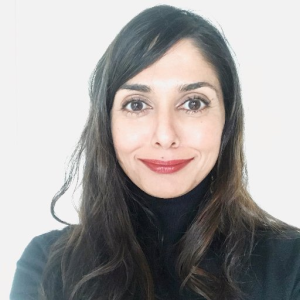 A national award–winning multimedia journalist, Sonal Patel has covered a wide range of technology, business, and policy issues affecting the power industry worldwide for POWER and its sister publications since 2008. Along with keeping her eye on national and international matters for POWER magazine’s monthly department Global Monitor, she contributes in-depth analysis and spot news pieces for POWER and POWERnews. She also surveys, crunches, and visualizes power generation data and trends from around the world for POWER’s web and print infographics and other multimedia. She is a graduate of the University of Houston.
A national award–winning multimedia journalist, Sonal Patel has covered a wide range of technology, business, and policy issues affecting the power industry worldwide for POWER and its sister publications since 2008. Along with keeping her eye on national and international matters for POWER magazine’s monthly department Global Monitor, she contributes in-depth analysis and spot news pieces for POWER and POWERnews. She also surveys, crunches, and visualizes power generation data and trends from around the world for POWER’s web and print infographics and other multimedia. She is a graduate of the University of Houston.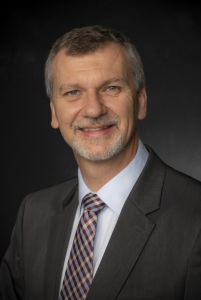 Richard Voorberg is President of the North America Hub of Siemens Energy, based in Orlando,
FL. In this role, Richard has regional responsibility for the Energy business in the Americas,
which includes the company’s Generation, Industrial Applications, and Transmission divisions.
Most recently, Richard served as the Head of Service in North America, where he was
responsible for managing all aspects of Large Power Service, including Gas Turbines, Steam
Turbines, Generators and Nuclear. Additionally, he is Chairman of the Board for Advanced Airfoil
Components.
Richard has almost 30 years of experience with Siemens including extensive involvement in the
manufacturing, commissioning management, project management and marketing aspects of the
power generation business. Richard was responsible for the design, project management and
building of a brand-new factory at the Charlotte, North Carolina, site for gas turbine
manufacturing.
Throughout his career Richard has had the privilege to live and work in several different
locations including Canada, Indonesia, Argentina, Korea and Germany.
The North American business consists of over 10,000 people who manage all aspects of
Service from Sales, Marketing, Project Management, Field Engineering, Shop Repair and
Business Administration.
Richard holds a Bachelor of Applied Science degree in Mechanical Engineering from the
University of Waterloo, Canada, and his MBA from ESMT in Berlin Germany.
Richard and his wife, Esther, have four children and reside in Winter Springs, FL.
Richard Voorberg is President of the North America Hub of Siemens Energy, based in Orlando,
FL. In this role, Richard has regional responsibility for the Energy business in the Americas,
which includes the company’s Generation, Industrial Applications, and Transmission divisions.
Most recently, Richard served as the Head of Service in North America, where he was
responsible for managing all aspects of Large Power Service, including Gas Turbines, Steam
Turbines, Generators and Nuclear. Additionally, he is Chairman of the Board for Advanced Airfoil
Components.
Richard has almost 30 years of experience with Siemens including extensive involvement in the
manufacturing, commissioning management, project management and marketing aspects of the
power generation business. Richard was responsible for the design, project management and
building of a brand-new factory at the Charlotte, North Carolina, site for gas turbine
manufacturing.
Throughout his career Richard has had the privilege to live and work in several different
locations including Canada, Indonesia, Argentina, Korea and Germany.
The North American business consists of over 10,000 people who manage all aspects of
Service from Sales, Marketing, Project Management, Field Engineering, Shop Repair and
Business Administration.
Richard holds a Bachelor of Applied Science degree in Mechanical Engineering from the
University of Waterloo, Canada, and his MBA from ESMT in Berlin Germany.
Richard and his wife, Esther, have four children and reside in Winter Springs, FL.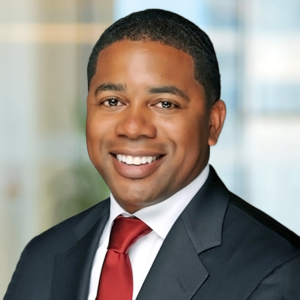 25+ years experience in transformational change – driving breakthrough results at scale – Expert in alignment of cultural activation with
strategic imperatives, organization structure and operating model design and change management
25+ years experience in transformational change – driving breakthrough results at scale – Expert in alignment of cultural activation with
strategic imperatives, organization structure and operating model design and change management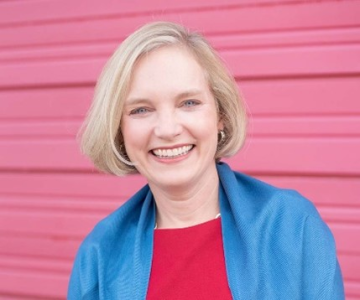 Kristen Etheredge, a partner in the firm’s Leadership, Change, and Organization Practice, helps clients navigate major transformations that change the way they work and determine future success. “I love working in LCO because ultimately, organizations are only as good as the people who are in them,” she says. “Being able to help individuals in the organization ‘do different’ each day, solve problems with the right balance of aspiration and practicality, is the greatest and most rewarding challenge.”
Kristen, who is based in Dallas, has over 25 years of experience supporting companies across a wide range of industries, including retail, telecommunications, high tech, real estate, and oil and gas, and has worked on a pro bono basis with organizations such as Feeding America and Big Brothers, Big Sisters. She approaches each project with a fresh mindset, knowing that clients have unique opportunities and challenges. “Sometimes you have to be willing to take a step back and adjust before you can move forward,” she says.
Kristen judges the success of every project by the same metric: impact. “My favorite projects,” she says, “are those where you can look back after a period of time and realize that our client—both the company as a whole and the individuals—are in a better place than when we started.”
Kristen earned her MBA from University of Texas at Austin, PhD in Chemistry from Rice University in Houston, TX and her BS from Texas Lutheran University. She lives with her husband, three children, and Labrador retriever in Southlake, TX.
Kristen Etheredge, a partner in the firm’s Leadership, Change, and Organization Practice, helps clients navigate major transformations that change the way they work and determine future success. “I love working in LCO because ultimately, organizations are only as good as the people who are in them,” she says. “Being able to help individuals in the organization ‘do different’ each day, solve problems with the right balance of aspiration and practicality, is the greatest and most rewarding challenge.”
Kristen, who is based in Dallas, has over 25 years of experience supporting companies across a wide range of industries, including retail, telecommunications, high tech, real estate, and oil and gas, and has worked on a pro bono basis with organizations such as Feeding America and Big Brothers, Big Sisters. She approaches each project with a fresh mindset, knowing that clients have unique opportunities and challenges. “Sometimes you have to be willing to take a step back and adjust before you can move forward,” she says.
Kristen judges the success of every project by the same metric: impact. “My favorite projects,” she says, “are those where you can look back after a period of time and realize that our client—both the company as a whole and the individuals—are in a better place than when we started.”
Kristen earned her MBA from University of Texas at Austin, PhD in Chemistry from Rice University in Houston, TX and her BS from Texas Lutheran University. She lives with her husband, three children, and Labrador retriever in Southlake, TX.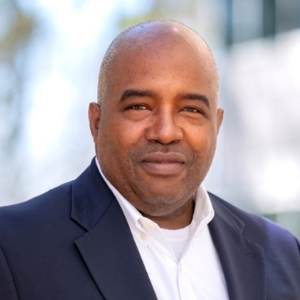 James currently serves as the Southern Company Executive in Residence at Auburn University’s McCrary Institute for Cyber and Critical Infrastructure Security. In this role he works closely with industry, academia, and federal partners, including national laboratories on electric grid cyber security strategies. James also served as a senior fellow at the McCrary Institute, a prestigious group of nationally renowned cyber and critical-infrastructure security experts.
With more than 28 years of service at Southern Company, James co-led an initiative to implement an enhanced Operations cyber and NERC-CIP program support model and has held various operational and engineering support leadership positions. Prior to joining Southern Company, James served in the U.S. Marines. He holds a B.S. in electrical engineering from Auburn University.
James currently serves as the Southern Company Executive in Residence at Auburn University’s McCrary Institute for Cyber and Critical Infrastructure Security. In this role he works closely with industry, academia, and federal partners, including national laboratories on electric grid cyber security strategies. James also served as a senior fellow at the McCrary Institute, a prestigious group of nationally renowned cyber and critical-infrastructure security experts.
With more than 28 years of service at Southern Company, James co-led an initiative to implement an enhanced Operations cyber and NERC-CIP program support model and has held various operational and engineering support leadership positions. Prior to joining Southern Company, James served in the U.S. Marines. He holds a B.S. in electrical engineering from Auburn University.
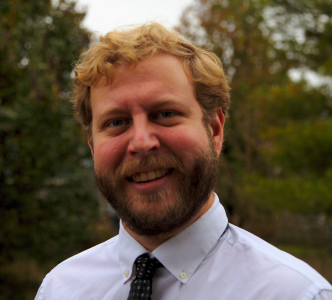 Jonathan Tubb is a cybersecurity professional with extensive expertise and experience developing solutions to power generations' biggest security challenges. He specializes in identifying, mitigating, and remediating threats in critical infrastructure environments. Jonathan holds a B.S. in Computer Engineering from Ohio State University and maintains a Professional Engineer (P.E.) license in Computer Engineering. He brings over 15 years of hands-on experience to his current role, as Director of Industrial Cyber and Digital Security at Siemens Energy, Inc. He currently teaches an Operational Technology Cyber Security masters course at Duke University’s Pratt school of Engineering. Outside the professional setting, he is an avid brewer.
Jonathan Tubb is a cybersecurity professional with extensive expertise and experience developing solutions to power generations' biggest security challenges. He specializes in identifying, mitigating, and remediating threats in critical infrastructure environments. Jonathan holds a B.S. in Computer Engineering from Ohio State University and maintains a Professional Engineer (P.E.) license in Computer Engineering. He brings over 15 years of hands-on experience to his current role, as Director of Industrial Cyber and Digital Security at Siemens Energy, Inc. He currently teaches an Operational Technology Cyber Security masters course at Duke University’s Pratt school of Engineering. Outside the professional setting, he is an avid brewer.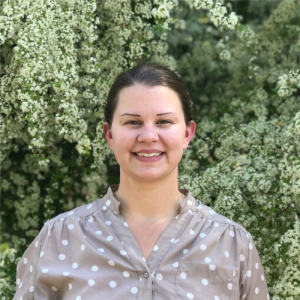
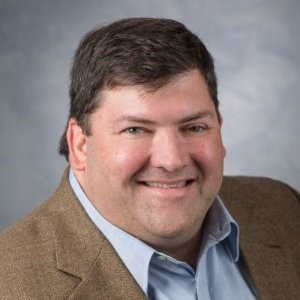 Bill is an automation engineer with nearly 30 years’ experience in pulp and paper, industrial energy, pharma, and power generation. His professional interests include automation of engineering tasks, legacy system migration, alarm management, and novel solution development. When not at work, Bill enjoys reading, sudoku, and training in Brazilian Jiu Jitsu.
Education – BSME, MIT 1986
Data Science Micro Masters, UC Davis (ongoing)
Bill is an automation engineer with nearly 30 years’ experience in pulp and paper, industrial energy, pharma, and power generation. His professional interests include automation of engineering tasks, legacy system migration, alarm management, and novel solution development. When not at work, Bill enjoys reading, sudoku, and training in Brazilian Jiu Jitsu.
Education – BSME, MIT 1986
Data Science Micro Masters, UC Davis (ongoing)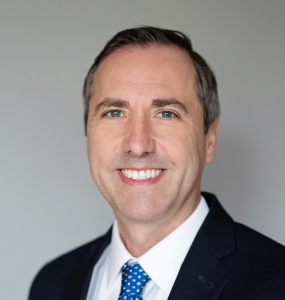 Brian Crandall is a VP of Sales at APERIO and lives in Austin, TX. Brian collaborates with APERIO’s customers to improve their business outcomes by improving trust and quality of their time-series process data. Prior to joining APERIO, he spent many years at Seeq and Emerson Automation Solutions with roles in sales, analytics engineering, and software development. Brian has degrees in Electrical Engineering from the Colorado School of Mines and the University of Texas at Austin.
Brian Crandall is a VP of Sales at APERIO and lives in Austin, TX. Brian collaborates with APERIO’s customers to improve their business outcomes by improving trust and quality of their time-series process data. Prior to joining APERIO, he spent many years at Seeq and Emerson Automation Solutions with roles in sales, analytics engineering, and software development. Brian has degrees in Electrical Engineering from the Colorado School of Mines and the University of Texas at Austin.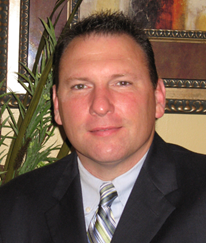 Randy Mullinax is responsible for the Southern Company retail M&D Center, remote operating center, equipment performance testing and maintenance strategy development for the generation fleet. He is currently leading the Performance and Reliability group’s effort focused on a digital maintenance program.
Randy brings with him extensive industry experience including contractor management and productivity. He also oversees the regional maintenance program. Randy spent 10 Years in the Foundry/Cast Metals industry and held various positions including Operations Manager, Production Manager, Technical Manager, and Plant Manager. After his career in the Foundry Industry, Randy spent the last 22 years in Power Generation. He has worked in multiple plants in the Southern Company System with various generating technologies. Randy has held many plant positions including Engineering Manager, Maintenance Manager, Regional Planning Manager, and is currently the General Manager for Performance and Reliability.
Randy Mullinax is a Graduate of the University of Missouri Rolla (Missouri S&T) with a bachelor’s degree in Metallurgical Engineering. He also has a master’s degree in Business Management from Troy State University.
Randy Mullinax is responsible for the Southern Company retail M&D Center, remote operating center, equipment performance testing and maintenance strategy development for the generation fleet. He is currently leading the Performance and Reliability group’s effort focused on a digital maintenance program.
Randy brings with him extensive industry experience including contractor management and productivity. He also oversees the regional maintenance program. Randy spent 10 Years in the Foundry/Cast Metals industry and held various positions including Operations Manager, Production Manager, Technical Manager, and Plant Manager. After his career in the Foundry Industry, Randy spent the last 22 years in Power Generation. He has worked in multiple plants in the Southern Company System with various generating technologies. Randy has held many plant positions including Engineering Manager, Maintenance Manager, Regional Planning Manager, and is currently the General Manager for Performance and Reliability.
Randy Mullinax is a Graduate of the University of Missouri Rolla (Missouri S&T) with a bachelor’s degree in Metallurgical Engineering. He also has a master’s degree in Business Management from Troy State University.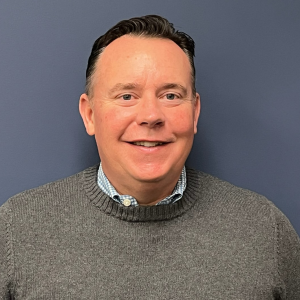 As the Vice President at Caddis Systems, Chris is responsible for the strategy, tactics, and programs to create interest, demand, and recognition for Caddis Systems and its products and services. With over 5 years of experience in this role, Chris has helped clients in various industries to monitor machine up-time and maximize machine productivity in all departments, using cutting-edge predictive maintenance technology and data-driven insights.
Chris’ core competencies include project management, machine monitoring integration and analysis, Preventative Maintenance Management, OEE as well as digital and traditional marketing avenues. Chris leads a highly data driven and collaborative team of software developers, sales engineers, assembly technicians and marketers, and works directly with C-suite executives, external vendors, and industry experts to lead small and large scale machine monitoring integrations that meet the goals and expectations of their clients. Chris is passionate about enhancing machine efficiency and operational advancement through both machine monitoring and AI collaborative efforts.
As the Vice President at Caddis Systems, Chris is responsible for the strategy, tactics, and programs to create interest, demand, and recognition for Caddis Systems and its products and services. With over 5 years of experience in this role, Chris has helped clients in various industries to monitor machine up-time and maximize machine productivity in all departments, using cutting-edge predictive maintenance technology and data-driven insights.
Chris’ core competencies include project management, machine monitoring integration and analysis, Preventative Maintenance Management, OEE as well as digital and traditional marketing avenues. Chris leads a highly data driven and collaborative team of software developers, sales engineers, assembly technicians and marketers, and works directly with C-suite executives, external vendors, and industry experts to lead small and large scale machine monitoring integrations that meet the goals and expectations of their clients. Chris is passionate about enhancing machine efficiency and operational advancement through both machine monitoring and AI collaborative efforts.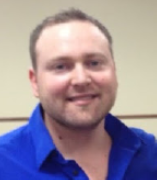 Craig is a Senior technical leader in the field of control system automation, smart instrumentation, and operational technology for Air Liquide. He is a regular presenter at control industry forums and conferences,
covering topics that focus on smart instrumentation technology, process control applications, and data-driven maintenance.
He has spent the past 20 years in the process control and instrumentation field providing unique and innovative solutions for air separation. His recent focus has been on data-driven maintenance thus moving the company towards a predictive maintenance model.
Craig is a Senior technical leader in the field of control system automation, smart instrumentation, and operational technology for Air Liquide. He is a regular presenter at control industry forums and conferences,
covering topics that focus on smart instrumentation technology, process control applications, and data-driven maintenance.
He has spent the past 20 years in the process control and instrumentation field providing unique and innovative solutions for air separation. His recent focus has been on data-driven maintenance thus moving the company towards a predictive maintenance model.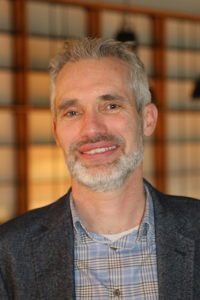
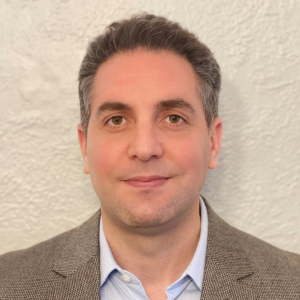
 Jane Arnold is a seasoned industry executive with over three decades of experience in chemical, discrete, and additive manufacturing. As a digital leader in Industry 4.0, she is dedicated to enhancing the impact of manufacturing through the adoption of cutting-edge technologies. Throughout her career, Jane has held executive positions at Stanley Black and Decker and Covestro, where she was responsible for spearheading digital transformations. Jane has her own advisory business and serves as a board member. Most recently Jane joined Aperio as Chief Customer Officer where they are focused on the industrial data quality problem.
Jane Arnold is a seasoned industry executive with over three decades of experience in chemical, discrete, and additive manufacturing. As a digital leader in Industry 4.0, she is dedicated to enhancing the impact of manufacturing through the adoption of cutting-edge technologies. Throughout her career, Jane has held executive positions at Stanley Black and Decker and Covestro, where she was responsible for spearheading digital transformations. Jane has her own advisory business and serves as a board member. Most recently Jane joined Aperio as Chief Customer Officer where they are focused on the industrial data quality problem.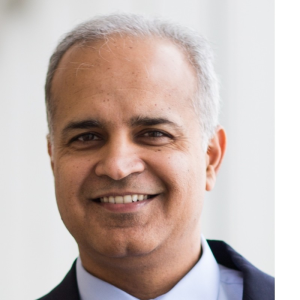 Technology professional with a strong track record of building cutting-edge modeling, simulation, and digital capabilities, and applying them to a wide variety of industrial applications - oil & gas production, refining & petrochemicals, optical-fiber and flat-panel display manufacturing, and recently the energy transition. A strong underpinning in scientific rigor and practical engineering judgement, with high sensitivity to business needs and macro trends.
Technology professional with a strong track record of building cutting-edge modeling, simulation, and digital capabilities, and applying them to a wide variety of industrial applications - oil & gas production, refining & petrochemicals, optical-fiber and flat-panel display manufacturing, and recently the energy transition. A strong underpinning in scientific rigor and practical engineering judgement, with high sensitivity to business needs and macro trends.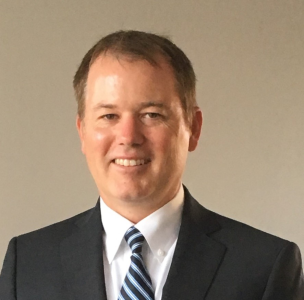 Chris Jackson has over 25 years of experience in asset management with a strong focus on fleet level monitoring and diagnostics. His current position is Consulting Engineer for Vistra’s Monitoring, Diagnostics and Solar Operations Center. In this role he is responsible for developing advanced equipment monitoring schemes to support the 44,000 megawatt fleet of power generation assets. This includes developing digital twins to monitor the performance and mechanical integrity of rotating assets. Chris has extensive experience in the configuration, monitoring, and maintenance of Advanced Pattern Recognition Models. He has developed advanced calculations to quantify the performance of various power generation types, including Nuclear, Coal, Natural Gas, Solar and Battery Storage. He is currently working on the M&D integration of four Nuclear generation sites recently acquired by Vistra.
Chris holds a Bachelor of Science in Mechanical Engineering from Oklahoma State University and a Masters in Business Administration from Southern Methodist University. He is a certified Vibration Analyst Level III, Infrared Thermography Analyst – Level II, and Machine Lubrication Analyst Level II. He is a licensed Professional Engineer in the state of Texas.
He is an avid runner and enjoys outdoor activities with his wife and three children.
Chris Jackson has over 25 years of experience in asset management with a strong focus on fleet level monitoring and diagnostics. His current position is Consulting Engineer for Vistra’s Monitoring, Diagnostics and Solar Operations Center. In this role he is responsible for developing advanced equipment monitoring schemes to support the 44,000 megawatt fleet of power generation assets. This includes developing digital twins to monitor the performance and mechanical integrity of rotating assets. Chris has extensive experience in the configuration, monitoring, and maintenance of Advanced Pattern Recognition Models. He has developed advanced calculations to quantify the performance of various power generation types, including Nuclear, Coal, Natural Gas, Solar and Battery Storage. He is currently working on the M&D integration of four Nuclear generation sites recently acquired by Vistra.
Chris holds a Bachelor of Science in Mechanical Engineering from Oklahoma State University and a Masters in Business Administration from Southern Methodist University. He is a certified Vibration Analyst Level III, Infrared Thermography Analyst – Level II, and Machine Lubrication Analyst Level II. He is a licensed Professional Engineer in the state of Texas.
He is an avid runner and enjoys outdoor activities with his wife and three children.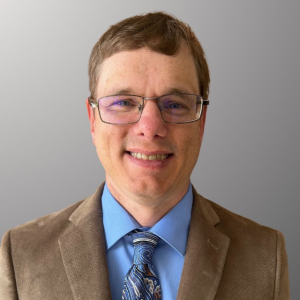 Mark Christofferson is an experienced cybersecurity professional with 20+ years of experience spanning Information Technology support, infrastructure, security, and, more recently, the convergence of these systems with Operational Technology systems. His career has included service to the public, private, non-governmental, and educational sectors. An adaptive nature over the course of his career has enabled him to develop an expansive knowledge of cybersecurity risk management, program development, and the tools and techniques necessary to address customer needs within the frameworks of common cybersecurity standards. Mark is dedicated to a practical approach of optimizing good cyber hygiene practices within the structure of individual entities. He will lend his expertise towards discussion of the benefits and challenges to leveraging Digital Twin technologies in today’s cyber ecosystem.
Mark Christofferson is an experienced cybersecurity professional with 20+ years of experience spanning Information Technology support, infrastructure, security, and, more recently, the convergence of these systems with Operational Technology systems. His career has included service to the public, private, non-governmental, and educational sectors. An adaptive nature over the course of his career has enabled him to develop an expansive knowledge of cybersecurity risk management, program development, and the tools and techniques necessary to address customer needs within the frameworks of common cybersecurity standards. Mark is dedicated to a practical approach of optimizing good cyber hygiene practices within the structure of individual entities. He will lend his expertise towards discussion of the benefits and challenges to leveraging Digital Twin technologies in today’s cyber ecosystem.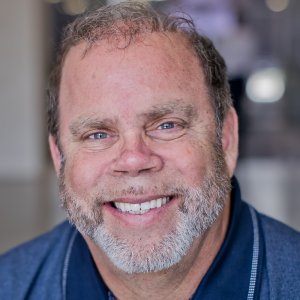 Marty is an international technical leader in the field of control system automation,advanced process control, operational technology for Air Liquide. He is a regular presenter at control industry forums and conferences, covering topics that focus on practical operational technology and process control applications.
He has spent the past 39 years in the process control and automation field providing unique and innovative solutions for the air separation, biotech (applying batch and advanced control solutions for mammalian cell culture bioreactors), and specialty and commodity chemical industry sectors. His recent focus has been on sustainable OT solutions to support ongoing operational excellence efforts within Air Liquide. Marty received a BSc in Chemical Engineering from the University of Maryland and MSc coursework in Computer Science from various universities.
He was honored by Smart Industry as one of the top 50 Digital Innovators for 2017.
Marty is an international technical leader in the field of control system automation,advanced process control, operational technology for Air Liquide. He is a regular presenter at control industry forums and conferences, covering topics that focus on practical operational technology and process control applications.
He has spent the past 39 years in the process control and automation field providing unique and innovative solutions for the air separation, biotech (applying batch and advanced control solutions for mammalian cell culture bioreactors), and specialty and commodity chemical industry sectors. His recent focus has been on sustainable OT solutions to support ongoing operational excellence efforts within Air Liquide. Marty received a BSc in Chemical Engineering from the University of Maryland and MSc coursework in Computer Science from various universities.
He was honored by Smart Industry as one of the top 50 Digital Innovators for 2017.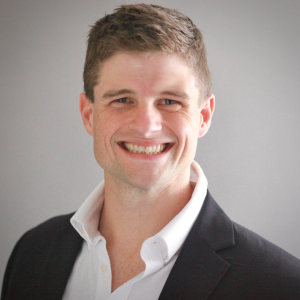 Jonathan Alexander is the Manufacturing AI & Advanced Analytics Manager within Albemarle’s global Manufacturing Excellence team. He has held a variety of roles within Manufacturing, including working within both Maintenance & Operations for both the Hydroprocessing Catalyst Plant in Bayport, TX and the Aluminum Alkyl plants in Pasadena, TX, along with leading a site’s Technology Implementation for Competitive Advantage (TICA) program. In his current global role, he has been focused on powering the potential of people by scaling AI (Albemarle Intelligence) and changing Albemarle’s culture around Manufacturing Data Analytics, an integral part of their journey towards Digital Transformation. Mr. Alexander holds a Bachelor of Science in Electrical Engineering from Louisiana State University and a Masters in Business Administration from The University of Houston in Clear Lake.
Jonathan Alexander is the Manufacturing AI & Advanced Analytics Manager within Albemarle’s global Manufacturing Excellence team. He has held a variety of roles within Manufacturing, including working within both Maintenance & Operations for both the Hydroprocessing Catalyst Plant in Bayport, TX and the Aluminum Alkyl plants in Pasadena, TX, along with leading a site’s Technology Implementation for Competitive Advantage (TICA) program. In his current global role, he has been focused on powering the potential of people by scaling AI (Albemarle Intelligence) and changing Albemarle’s culture around Manufacturing Data Analytics, an integral part of their journey towards Digital Transformation. Mr. Alexander holds a Bachelor of Science in Electrical Engineering from Louisiana State University and a Masters in Business Administration from The University of Houston in Clear Lake.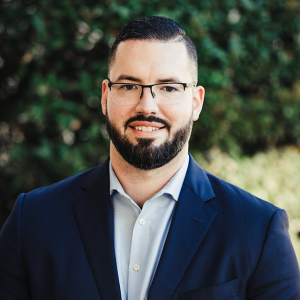 As Director of Technology Innovation at The Energy Authority (TEA), Joe Witkowski leads reseach and development in support of TEA’s Innovation Team. His reputation as a talented IT professional has enabled him to serve multiple markets including government, finance, energy, and transportation. He is heavily involved in transformative initiatives using AI in the municiple utility space.
As Director of Technology Innovation at The Energy Authority (TEA), Joe Witkowski leads reseach and development in support of TEA’s Innovation Team. His reputation as a talented IT professional has enabled him to serve multiple markets including government, finance, energy, and transportation. He is heavily involved in transformative initiatives using AI in the municiple utility space.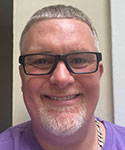 Alan Karr is the Head Of Digitalization for CD North America at Siemens Energy and is located in Alpharetta, Georgia.
He started working for Siemens in 2009 and has more than 30 years of experience in power generation with increasing responsibilities in program management, project management, process controls, power plant O&M, and technical sales.
In his most recent role as an Engineering Manager for Systems & Digitalization (2019-2022), Mr. Karr oversaw an engineering team that used data-driven digital solutions to deliver measurable results to solve a business need. Mr. Karr holds a master’s degree in business administration and an undergraduate degree in Engineering Management from the Michael W. Louis School of Management. Mr. Karr is also certified as a Project Management Professional (PMI), Scrum Product Owner and a Scrum Master.
Alan Karr is the Head Of Digitalization for CD North America at Siemens Energy and is located in Alpharetta, Georgia.
He started working for Siemens in 2009 and has more than 30 years of experience in power generation with increasing responsibilities in program management, project management, process controls, power plant O&M, and technical sales.
In his most recent role as an Engineering Manager for Systems & Digitalization (2019-2022), Mr. Karr oversaw an engineering team that used data-driven digital solutions to deliver measurable results to solve a business need. Mr. Karr holds a master’s degree in business administration and an undergraduate degree in Engineering Management from the Michael W. Louis School of Management. Mr. Karr is also certified as a Project Management Professional (PMI), Scrum Product Owner and a Scrum Master. Arpan Seth spearheads a team of data scientists and data engineers at Evonik, focusing on the use of AI and Data Science in Process Engineering. An alumnus of Purdue University, he earned his PhD in Chemical Engineering with a special focus on its confluence with Computer Science. Starting his career at Evonik as a Data Scientist, Arpan's innovation-driven approach led him to aim for transformative solutions that simplify the operation and maintenance of chemical plants for process engineers.
Arpan Seth spearheads a team of data scientists and data engineers at Evonik, focusing on the use of AI and Data Science in Process Engineering. An alumnus of Purdue University, he earned his PhD in Chemical Engineering with a special focus on its confluence with Computer Science. Starting his career at Evonik as a Data Scientist, Arpan's innovation-driven approach led him to aim for transformative solutions that simplify the operation and maintenance of chemical plants for process engineers.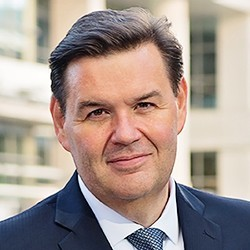
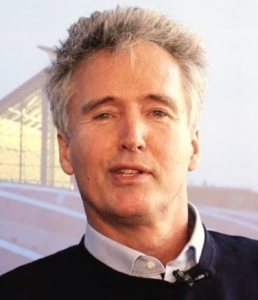 Peter Seeberg was born in the Netherlands and studied Computer Aided Design in Delft.
After 25 years in the IT industry (Intel, Infor, Seiko, Mentor), and almost 10 years in industrial automation (Softing), since 2019 he works as an independent AI consultant.
Peter has been actively involved in the
introduction of Industry 4.0, with the (German) Machine Builders & Plants Association, OPC Foundation and Smart Factory Organization and initiated and co-founded the internal startup Industrial Data Intelligence.
Peter does public presentations, moderates discussions, and advises industrial companies on the introduction of AI.
He co-produces the “Industrial AI” podcast and is host of the OPC Foundation podcast.
Peter Seeberg was born in the Netherlands and studied Computer Aided Design in Delft.
After 25 years in the IT industry (Intel, Infor, Seiko, Mentor), and almost 10 years in industrial automation (Softing), since 2019 he works as an independent AI consultant.
Peter has been actively involved in the
introduction of Industry 4.0, with the (German) Machine Builders & Plants Association, OPC Foundation and Smart Factory Organization and initiated and co-founded the internal startup Industrial Data Intelligence.
Peter does public presentations, moderates discussions, and advises industrial companies on the introduction of AI.
He co-produces the “Industrial AI” podcast and is host of the OPC Foundation podcast.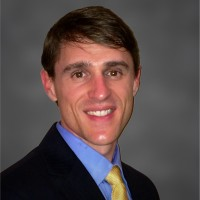 Steven Ford is currently the Compliance & Support Manager at Alabama Power's Barry Steam Plant located in Bucks, Alabama. He also serves as the chairman of the Southern Company Technology Leadership Team tasked with ensuring system-wide cost-effective, reliable, and efficient technology solutions supporting the business unit strategy.
Steven has worked in leadership roles with increasing responsibility across multiple plant sites in Georgia Power, Gulf Power, and Alabama Power. These roles include Operations Manager, Maintenance Manager, Engineering & Planning Manager, and Plant Manager. He has leadership experience in both coal & natural gas-powered generation, including supercritical, combined cycle, and co-generation technologies supporting some of the state's largest chemical plant customers. In the Spring of 2020, Steven supported the Generation fleet as the COVID Pandemic Coordinator engaging cross-functional support from Supply Chain, Human Resources, IBEW Leadership, Disability Management, and Corporate Compliance to meet the evolving needs of employees working at our generating facilities.
Steven believes that being a part of the Alabama Power Generation leadership team allows him to foster a safer working environment, create meaningful professional developmental opportunities for his team, and find ways to improve our generating product through integrated technology.
Steven graduated from Georgia Tech with a Bachelor's in Civil Engineering, Georgia State University with a Master's in Business Administration, and Birmingham School of Law with a Juris Doctorate. Steven is married, has four children, and lives in Fairhope, Alabama. In his spare time, Steven enjoys working on cars, playing golf, and spending time traveling with his family.
Steven Ford is currently the Compliance & Support Manager at Alabama Power's Barry Steam Plant located in Bucks, Alabama. He also serves as the chairman of the Southern Company Technology Leadership Team tasked with ensuring system-wide cost-effective, reliable, and efficient technology solutions supporting the business unit strategy.
Steven has worked in leadership roles with increasing responsibility across multiple plant sites in Georgia Power, Gulf Power, and Alabama Power. These roles include Operations Manager, Maintenance Manager, Engineering & Planning Manager, and Plant Manager. He has leadership experience in both coal & natural gas-powered generation, including supercritical, combined cycle, and co-generation technologies supporting some of the state's largest chemical plant customers. In the Spring of 2020, Steven supported the Generation fleet as the COVID Pandemic Coordinator engaging cross-functional support from Supply Chain, Human Resources, IBEW Leadership, Disability Management, and Corporate Compliance to meet the evolving needs of employees working at our generating facilities.
Steven believes that being a part of the Alabama Power Generation leadership team allows him to foster a safer working environment, create meaningful professional developmental opportunities for his team, and find ways to improve our generating product through integrated technology.
Steven graduated from Georgia Tech with a Bachelor's in Civil Engineering, Georgia State University with a Master's in Business Administration, and Birmingham School of Law with a Juris Doctorate. Steven is married, has four children, and lives in Fairhope, Alabama. In his spare time, Steven enjoys working on cars, playing golf, and spending time traveling with his family.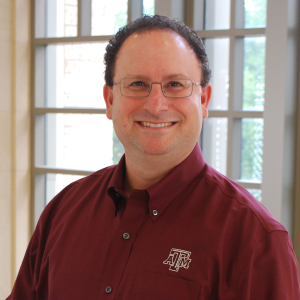 Roland graduated from Texas A&M University with a B.S. in Mechanical Engineering. He joined the Career Center in 2017 following a successful 25-year career in the Medical Device Industry. With a passion for innovation, Roland has commercialized over 100 new products, received multiple patents, and was the R&D Project Manager and Marketing Product Manager concurrently for products grossing over $250 Million in sales. Roland earned Product Manager of the Year awards at two different companies within his first 12 years after college, trained 1,000s of sales reps and 100s of surgeons, and advanced to Director of Global Marketing roles for companies ranging from start-up to Fortune 500. Roland has adapted principals learned as an industry executive to mentor students and to lead the Texas A&M Career Center with respect to its 25,000+ engineering and architecture students.
Roland graduated from Texas A&M University with a B.S. in Mechanical Engineering. He joined the Career Center in 2017 following a successful 25-year career in the Medical Device Industry. With a passion for innovation, Roland has commercialized over 100 new products, received multiple patents, and was the R&D Project Manager and Marketing Product Manager concurrently for products grossing over $250 Million in sales. Roland earned Product Manager of the Year awards at two different companies within his first 12 years after college, trained 1,000s of sales reps and 100s of surgeons, and advanced to Director of Global Marketing roles for companies ranging from start-up to Fortune 500. Roland has adapted principals learned as an industry executive to mentor students and to lead the Texas A&M Career Center with respect to its 25,000+ engineering and architecture students.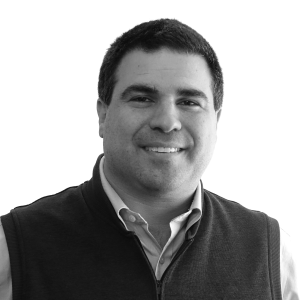 Matthew Kleiman is an experienced entrepreneur, executive, investor, and author focused on bringing safety and sustainability to industrial maintenance and construction.
Currently, Matt serves as co-founder & CEO of Cumulus Digital Systems, an award-winning quality management system that ensures mission-critical work is done right the first time, every time. With previous experience leading teams at Shell and Draper, Matt leverages his industry knowledge to build positive, lasting impact in the industry.
Matt received a B.A. from Rutgers University, a J.D. from Duke University, and executive certificates in management and leadership from the MIT Sloan School of Management.
Matthew Kleiman is an experienced entrepreneur, executive, investor, and author focused on bringing safety and sustainability to industrial maintenance and construction.
Currently, Matt serves as co-founder & CEO of Cumulus Digital Systems, an award-winning quality management system that ensures mission-critical work is done right the first time, every time. With previous experience leading teams at Shell and Draper, Matt leverages his industry knowledge to build positive, lasting impact in the industry.
Matt received a B.A. from Rutgers University, a J.D. from Duke University, and executive certificates in management and leadership from the MIT Sloan School of Management.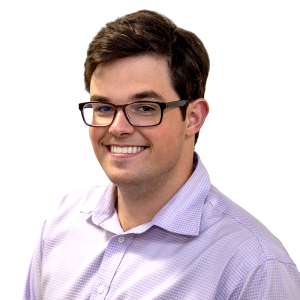 Matthew Rogers, PhD, is an ICS Cyber Security Expert in the Office of the Technical Director at CISA. He received a PhD in securing legacy OT networks in vehicles from the University of Oxford on a Rhodes Scholarship. Matthew worked as the founding engineer at a vehicle and weapon system cybersecurity startup before pursuing broader ICS cybersecurity efforts at MITRE. At CISA Matthew focuses on ICS Strategy and how ICS R&D efforts can be transitioned to effective tools for Critical Infrastructure sectors.
Matthew Rogers, PhD, is an ICS Cyber Security Expert in the Office of the Technical Director at CISA. He received a PhD in securing legacy OT networks in vehicles from the University of Oxford on a Rhodes Scholarship. Matthew worked as the founding engineer at a vehicle and weapon system cybersecurity startup before pursuing broader ICS cybersecurity efforts at MITRE. At CISA Matthew focuses on ICS Strategy and how ICS R&D efforts can be transitioned to effective tools for Critical Infrastructure sectors.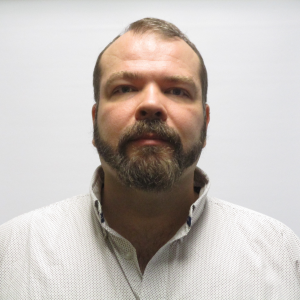 Iiro is a chemical engineer with 15+ years of experience in process industries working with digitalization and the application of digital twins across chemical industry value chains. He has been working in multiple areas and countries within Siemens focusing on the application, business development and commercial aspects of Industry 4.0 and the Digital Enterprise. His current role is based in Houston, TX promoting the adoption of new technologies focusing in the chemical industries.
Iiro is a chemical engineer with 15+ years of experience in process industries working with digitalization and the application of digital twins across chemical industry value chains. He has been working in multiple areas and countries within Siemens focusing on the application, business development and commercial aspects of Industry 4.0 and the Digital Enterprise. His current role is based in Houston, TX promoting the adoption of new technologies focusing in the chemical industries.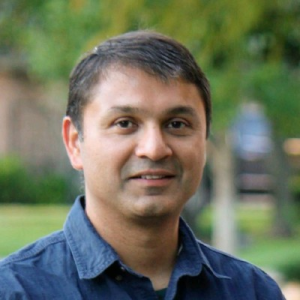 PhD Chemical Engg [Reaction Engg and Catalysis]
PhD Chemical Engg [Reaction Engg and Catalysis]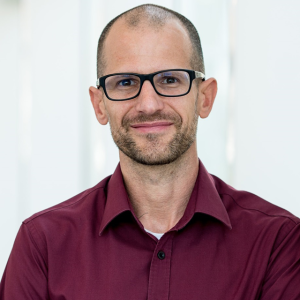 Yves Gorat Stommel is currently the head of the IT unit Data & Analytics, with a strong focus on enabling the company through both managed analytics and AI applications, as well as data, analytics, and AI platforms. Yves’ motivation stems from bringing together people, technology, and positive change.
Yves Gorat Stommel is currently the head of the IT unit Data & Analytics, with a strong focus on enabling the company through both managed analytics and AI applications, as well as data, analytics, and AI platforms. Yves’ motivation stems from bringing together people, technology, and positive change.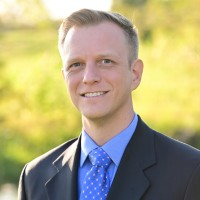
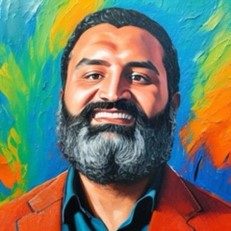 A visionary leader recognized for innovation, transformation, entrepreneurship, and extensive experience spanning close to two decades in consulting for investment firms. With an extensive engineering background encompassing both an MS and a PhD in Metallurgical Engineering from the University of Utah.
Yousef has close to two decades of roles characterized by transformative contributions through analytics, strategy, and innovation is brought to the table. Expertise in AI, Advanced Analytics, and Computational Engineering, including CFD and Computational Thermodynamics, among other tools and techniques, is possessed.
Expertise in business digitalization/transformation and Industry 4.0 is harnessed, guiding large enterprises through the complexities of modernizing their operations and embracing digital technologies for enhanced efficiency and competitiveness.
Collaboration with industry giants in the enterprise AI space, including C3.ai, AWS, Azure, Google Cloud, Nvidia, and others, has been a hallmark. Cutting-edge technologies and platforms have been leveraged to drive innovation and deliver exceptional value to organizations.
Additionally, extensive experience in consulting for investment firms has been gained, further enhancing strategic acumen. Roles as a former Chief AI Officer and Founder of Advanced Analytics Center have been instrumental in harnessing AI's power to drive innovation, streamline processes, and deliver exceptional value to organizations.
Extensive experience in team building, coaching, mentoring, and growing leaders has been a core part of his leadership journey. While his title has transitioned, his mission remains steadfast: pioneering business transformation through strategic analytics and cutting-edge innovation. His toolkit is expansive, covering domains such as Big Data, IoT, advanced analytics, machine learning, generative AI, and Process Control and Optimization. Collaboration is at the core of his approach, ensuring synergy across diverse teams and fostering data-centric decision-making at the highest corporate levels.
Specialties span Advanced Analytics and Data Science to Product Management, Strategy, and Business Transformation, Process Engineering among many others.
A visionary leader recognized for innovation, transformation, entrepreneurship, and extensive experience spanning close to two decades in consulting for investment firms. With an extensive engineering background encompassing both an MS and a PhD in Metallurgical Engineering from the University of Utah.
Yousef has close to two decades of roles characterized by transformative contributions through analytics, strategy, and innovation is brought to the table. Expertise in AI, Advanced Analytics, and Computational Engineering, including CFD and Computational Thermodynamics, among other tools and techniques, is possessed.
Expertise in business digitalization/transformation and Industry 4.0 is harnessed, guiding large enterprises through the complexities of modernizing their operations and embracing digital technologies for enhanced efficiency and competitiveness.
Collaboration with industry giants in the enterprise AI space, including C3.ai, AWS, Azure, Google Cloud, Nvidia, and others, has been a hallmark. Cutting-edge technologies and platforms have been leveraged to drive innovation and deliver exceptional value to organizations.
Additionally, extensive experience in consulting for investment firms has been gained, further enhancing strategic acumen. Roles as a former Chief AI Officer and Founder of Advanced Analytics Center have been instrumental in harnessing AI's power to drive innovation, streamline processes, and deliver exceptional value to organizations.
Extensive experience in team building, coaching, mentoring, and growing leaders has been a core part of his leadership journey. While his title has transitioned, his mission remains steadfast: pioneering business transformation through strategic analytics and cutting-edge innovation. His toolkit is expansive, covering domains such as Big Data, IoT, advanced analytics, machine learning, generative AI, and Process Control and Optimization. Collaboration is at the core of his approach, ensuring synergy across diverse teams and fostering data-centric decision-making at the highest corporate levels.
Specialties span Advanced Analytics and Data Science to Product Management, Strategy, and Business Transformation, Process Engineering among many others.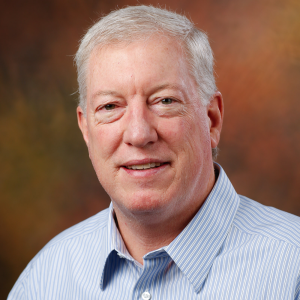 David DeBari is an R&D Team Leader and innovator within Automation and Process Control Engineering for the ExxonMobil Technology and Engineering Company. He has many years of automation experience in both continuous and batch processes and has built, migrated, or replaced a variety of automation systems in numerous projects. David is the ExxonMobil Open Process Automation (OPA) Program Technical Team Leader and one of the original members of ExxonMobil’s OPA Program Team formed in 2012. He has provided technical leadership for the proof of concept, pilot unit prototype project, and the Test Bed Facility and currently guiding the OPA Field Trial Project R&D activities for the ExxonMobil Program.
David DeBari is an R&D Team Leader and innovator within Automation and Process Control Engineering for the ExxonMobil Technology and Engineering Company. He has many years of automation experience in both continuous and batch processes and has built, migrated, or replaced a variety of automation systems in numerous projects. David is the ExxonMobil Open Process Automation (OPA) Program Technical Team Leader and one of the original members of ExxonMobil’s OPA Program Team formed in 2012. He has provided technical leadership for the proof of concept, pilot unit prototype project, and the Test Bed Facility and currently guiding the OPA Field Trial Project R&D activities for the ExxonMobil Program.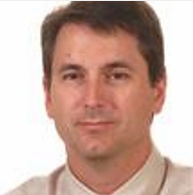
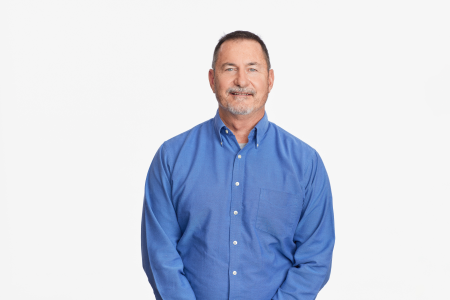 Steve has over 30 years of experience in the power industry working in plant operation & maintenance, new plant construction, plant engineering, and 20+ years as plant manager at various power plants. For the past 3 years, Steve has developed data & analytical products for various areas of NRG mainly supporting plant operation and market operation. Steve has a Mechanical Engineering degree from the University of Houston.
Steve has over 30 years of experience in the power industry working in plant operation & maintenance, new plant construction, plant engineering, and 20+ years as plant manager at various power plants. For the past 3 years, Steve has developed data & analytical products for various areas of NRG mainly supporting plant operation and market operation. Steve has a Mechanical Engineering degree from the University of Houston.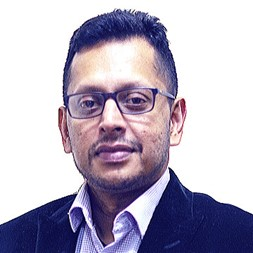 At Covestro, Mathew Sudeesh currently leads a variety of projects and engagement towards Smart factory initiative , Leading digital innovation, transformation of Manufacturing Operations using IOT, data science, cloud platforms, Mobile technologies.
Prior to joining Covestro/Bayer, Mathew was a Software engineering Consultant with Deloitte . He has a MBA from University of Pittsburgh and a Bachelor of engineering in Electronics &Comm.
At Covestro, Mathew Sudeesh currently leads a variety of projects and engagement towards Smart factory initiative , Leading digital innovation, transformation of Manufacturing Operations using IOT, data science, cloud platforms, Mobile technologies.
Prior to joining Covestro/Bayer, Mathew was a Software engineering Consultant with Deloitte . He has a MBA from University of Pittsburgh and a Bachelor of engineering in Electronics &Comm.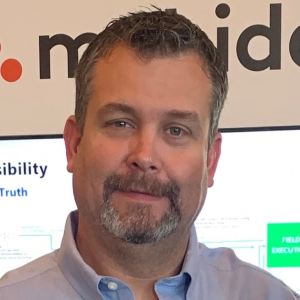 Joshua Tauber brings over two decades of invaluable experience in the oil and chemical industry, specializing in turnarounds and construction management. With five years of dedicated service at Delek US, he currently serves as the Director of Turnaround at Tyler and El Dorado, where he oversees critical operations with precision and expertise.
Prior to his current role, Joshua held the esteemed position of Construction Manager for seven years at Chevron Phillips Chemical Company, where he honed his skills in project execution and management. Throughout his career, Joshua has demonstrated an unwavering commitment to excellence, earning him a reputation as a trusted industry expert.
Throughout his career, Joshua has demonstrated an unwavering commitment to excellence, earning him a reputation as a trusted industry expert and innovative thought-leader. With a deep understanding of turnaround processes and a proven track record of success, Joshua Tauber is poised to deliver valuable insights and strategic guidance. His wealth of experience makes him a valuable asset to any team seeking to optimize operations and drive sustainable growth in the oil and chemical sector.
Joshua Tauber brings over two decades of invaluable experience in the oil and chemical industry, specializing in turnarounds and construction management. With five years of dedicated service at Delek US, he currently serves as the Director of Turnaround at Tyler and El Dorado, where he oversees critical operations with precision and expertise.
Prior to his current role, Joshua held the esteemed position of Construction Manager for seven years at Chevron Phillips Chemical Company, where he honed his skills in project execution and management. Throughout his career, Joshua has demonstrated an unwavering commitment to excellence, earning him a reputation as a trusted industry expert.
Throughout his career, Joshua has demonstrated an unwavering commitment to excellence, earning him a reputation as a trusted industry expert and innovative thought-leader. With a deep understanding of turnaround processes and a proven track record of success, Joshua Tauber is poised to deliver valuable insights and strategic guidance. His wealth of experience makes him a valuable asset to any team seeking to optimize operations and drive sustainable growth in the oil and chemical sector.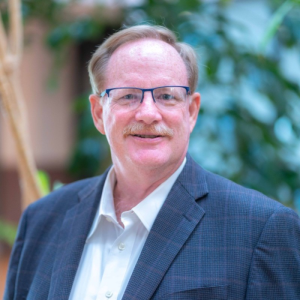 As Mobideo’s President of North America, Doug is focused on raising awareness about the digitalization of the industrial workforce and driving business growth through consultative partnerships. Doug joined Mobideo with an extensive background in the energy industry. Previously a Solution Consultant at BCP Engineers & Consultants, he was responsible for implementing Asset Management strategies that brought together economics, engineering, information technology, sustainability, and human elements to achieve customers’ missions and visions. His expertise includes the deployment of Asset Benchmarks, GAP Analysis, Strategic Asset Management Planning, aligning Asset Management Plans, and optimizing system and application selection and deployment to optimize processes and financial performance.
As Mobideo’s President of North America, Doug is focused on raising awareness about the digitalization of the industrial workforce and driving business growth through consultative partnerships. Doug joined Mobideo with an extensive background in the energy industry. Previously a Solution Consultant at BCP Engineers & Consultants, he was responsible for implementing Asset Management strategies that brought together economics, engineering, information technology, sustainability, and human elements to achieve customers’ missions and visions. His expertise includes the deployment of Asset Benchmarks, GAP Analysis, Strategic Asset Management Planning, aligning Asset Management Plans, and optimizing system and application selection and deployment to optimize processes and financial performance.